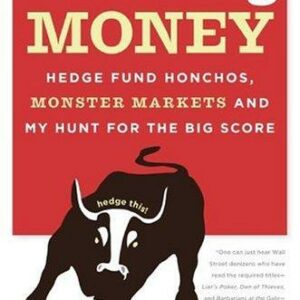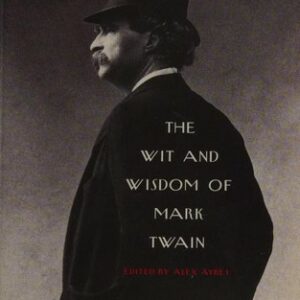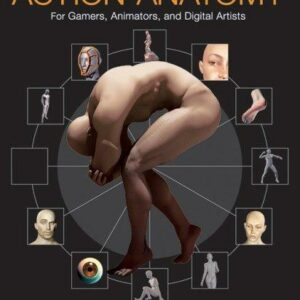The Art Thief
$18.00
| Title | Range | Discount |
|---|---|---|
| Trade Discount | 5 + | 25% |
- Description
- Additional information
Description
NEW YORK TIMES BEST SELLER • One of the most remarkable true-crime narratives of the twenty-first century: the story of the world’s most prolific art thief, Stéphane Breitwieser. • “The Art Thief, like its title character, has confidence, élan, and a great sense of timing.”—The New Yorker
A BEST BOOK OF THE YEAR: The Washington Post, The New Yorker, Lit Hub
“Enthralling.” —The Wall Street Journal
In this spellbinding portrait of obsession and flawed genius, the best-selling author of The Stranger in the Woods brings us into Breitwieser’s strange world—unlike most thieves, he never stole for money, keeping all his treasures in a single room where he could admire them.
For centuries, works of art have been stolen in countless ways from all over the world, but no one has been quite as successful at it as the master thief Stéphane Breitwieser. Carrying out more than two hundred heists over nearly eight years—in museums and cathedrals all over Europe—Breitwieser, along with his girlfriend who worked as his lookout, stole more than three hundred objects, until it all fell apart in spectacular fashion.
In The Art Thief, Michael Finkel brings us into Breitwieser’s strange and fascinating world. Unlike most thieves, Breitwieser never stole for money. Instead, he displayed all his treasures in a pair of secret rooms where he could admire them to his heart’s content. Possessed of a remarkable athleticism and an innate ability to circumvent practically any security system, Breitwieser managed to pull off a breathtaking number of audacious thefts. Yet these strange talents bred a growing disregard for risk and an addict’s need to score, leading Breitwieser to ignore his girlfriend’s pleas to stop—until one final act of hubris brought everything crashing down.
This is a riveting story of art, crime, love, and an insatiable hunger to possess beauty at any cost.ONE OF INDIGO’S TEN BEST BOOKS OF 2023
ONE OF THE WASHINGTON POST’S BEST BOOKS OF 2023
ONE OF AMAZON’S TEN BEST BOOKS OF 2023
“The Art Thief, like its title character, has confidence, élan, and a great sense of timing. It is propelled by suspense and surprises….This ultra-lucrative, odds-defying crime streak is wonderfully narrated by Finkel, in a tale whose trajectory is less rise and fall than crazy and crazier….Part of what makes Finkel’s book so much fun is that, without exception, [Breitwieser’s] strategies are insane.”
—Kathryn Schulz, The New Yorker
“A mesmerizing true-crime psychological thriller….The Art Thief develops the tension of a French policier, where the crook (for whom you alternately feel sympathy and disgust) has Maigret or Poirot hot on his trail. The final outcome is a shock. Mr. Finkel tells an enthralling story. From start to finish, this book is hard to put down.”
—Moira Hodgson, The Wall Street Journal
“Enthralling…In animated and colorful prose, Finkel summons the emotional intensity of a murder mystery. But old masters, not bodies, are missing….The Art Thief is about heists, yes, but it also speaks to much more.”
—Brandon Tensley, The Washington Post
“Exhilarating…Finkel’s narrative thrills and electrifies, until it all barrels toward inevitable capture, two shocking betrayals, and an astonishing conclusion.”
—Adrienne Westenfeld, Esquire
“Thrilling…Finkel deftly unspools the story of Breitwieser’s improbable years-long adventure.”
—Geoffrey Gagnon, GQ
“Meticulously detailed, [a] page-turning account….As much a crime caper as a psychological thriller, Finkel’s narrative interweaves gripping descriptions of Breitweiser’s in-plain-sight thefts armed with nothing more than stealth and a Swiss Army knife, a concise history of global art theft, and psychologists’ musings on Breitwieser’s unconscious motivations….Finkel deftly keeps us swaying between great sympathy for his central character and profound suspicion.”
—Jenny McPhee, Air Mail
“It is romantic to liken art thieves to Pierce Brosnan’s glamorous character in The Thomas Crown Affair. The reality is far less charming. Case in point: Stéphane Breitwieser, one of the most successful art thieves of all time. From roughly 1994 to 2001, Breitwieser executed more than 200 heists. The book’s first lesson? Europe has a lot of understaffed historic buildings. The second? Even a kleptomaniac with delusions of grandeur can be made mildly sympathetic in the hands of a skilled writer.”
—James Tarmy, Bloomberg
“The Art Thief benefits from a built-in ticking clock as time runs out for Breitwieser and his girlfriend. Finkel controls the pace effortlessly, broadening and narrowing focus from the day-to-day of the thieves to the intricate plotting of their thefts and a history of art crime, as well as who steals and why. That combined with mounting dread for the artworks’ fate makes for a heart-pounding read.”
—Maren Longbella, Star Tribune
“Finkel turns his extensive research and interviews into a suspenseful story that reads like a novel. He relates Breitwieser’s technique in vivid detail, and then shows us what happened to an estimated $2 billion worth of paintings, sculptures and other works. Finkel explores the relationships between Breitwieser and the women in his life, along with interesting bits of art history. A true-crime thriller that’s a work of art.”
—Suzanne Perez, KMUW Wichita
“Finkel has crafted The Art Thief with finesse and élan. He tells his tale of obsessive desires and ornate objects in measured and unadorned prose; employs a supple structure that separates the multiple threads of the tale while also exploring their weave; and advances the linear plot with narrative strategies that not only anticipate its foregone conclusion without giving it away, but also incorporate into the unfolding events his retrospective analyses of them….[Finkel] manages point of view with deftness and purpose….The Art Thief…morphs from an entertaining caper story into a claustrophobic study in pathology…An absorbing but disquieting read.”
—Charles Caramello, Washington Independent Review of Books
“This is an absorbing and astonishing portrait of a fascinating and complicated character—a riveting story of obsession and misplaced brilliance.”
—Kirk Wallace Johnson, best-selling author of The Feather Thief and The Fishermen and the Dragon
“In this masterful true crime account, Finkel traces the fascinating exploits of Stéphane Breitwieser, a French art thief who stole more than 200 artworks…turning his mother’s attic into a glittering trove of oil paintings, silver vessels, and antique weaponry….Drawing on art theory and Breitwieser’s psychology reports, Finkel speculates on his subject’s addiction to beauty….It’s a riveting ride.”
—Publishers Weekly, starred review
“The tale of a strong candidate for the title of ‘most prolific art thief ever….’ Finkel’s play-by-play of each theft has the pacing and atmosphere of a good suspense tale….The author describes each acquisition as well as Breitwieser’s simple but effective methods….Finkel’s extensive research, survey of art history, and hours of interviews with his subject combine for a compelling read.”
—Kirkus
“A riveting ride….An engrossing true crime narrative….Obsessive crime, dangerous beauty, ill-fated love: The Art Thief is the stuff of noir fiction, made all the more compelling and audacious for its authenticity.”
—BookPage
“From the opening chapter, Finkel’s tight prose heightens the drama of each theft, as Breitweiser and his girlfriend Anne-Catherine Kleinklaus, who serves as his lookout, enter Belgium’s Rubens House amid visitors and guards….A fascinating read. Finkel will have art history and true crime lovers obsessively turning the pages of this suspenseful, smartly written work until its shocking conclusion.”
—Library Journal
“The Art Thief is both comprehensive and completely absorbing. It will have you wondering, as judges and juries did, if the defendant is a career criminal or simply an aesthete.”
—Lorraine W. Shanley, BookReporterMICHAEL FINKEL is the best-selling author of The Stranger in the Woods: The Extraordinary Story of the Last True Hermit and True Story: Murder, Memoir, Mea Culpa. He lives in Salt Lake City, Utah.1
Approaching the museum, ready to hunt, Stéphane Breitwieser clasps hands with his girlfriend, Anne-Catherine Kleinklaus, and together they stroll to the front desk and say hello, a cute couple. Then they purchase two tickets with cash and walk in.
It’s lunchtime, stealing time, on a busy Sunday in Antwerp, Belgium, in February 1997. The couple blends with the tourists at the Rubens House, pointing and nodding at sculptures and oils. Anne-Catherine is tastefully dressed in Chanel and Dior bought in secondhand shops, a big Yves Saint Laurent bag on her shoulder. Breitwieser wears a button-down shirt tucked into stylish pants, topped by an overcoat that’s sized a little too roomy, a Swiss Army knife stashed in a pocket.
The Rubens House is an elegant museum in the former residence of Peter Paul Rubens, the great Flemish painter of the seventeenth century. The couple drifts through the parlor and kitchen and dining room as Breitwieser memorizes the side doors and keeps track of the guards. Several escape routes take shape in his mind. The item they’re hunting is sheltered at the rear of the museum, in a ground-floor gallery with a brass chandelier and soaring windows, some now shuttered to protect the works from the midday sun. Here, mounted atop an ornate wooden dresser, is a plexiglass display box fastened to a sturdy base. Sealed inside the box is an ivory sculpture of Adam and Eve.
Breitwieser had encountered the piece on a solo scouting trip a few weeks earlier and had fallen under its spell—the four-hundred-year-old carving still radiates the inner glow, unique to ivory, that feels to him transcendent. After that trip, he could not stop thinking of the sculpture, dreaming of it, so he has returned to the Rubens House with Anne-Catherine.
All forms of security have a weakness. The flaw with the plexiglass box, he had seen on his scouting visit, is that the upper part can be separated from the base by removing two screws. Tricky screws, sure, difficult to reach at the rear of the box, but just two. The flaw with the security guards is they’re human. They get hungry. Most of the day, Breitwieser had observed, there is a guard in each gallery, watching from a chair. Except at lunchtime, when the chairs wait empty as the security staff rotates shorthanded to eat, while those who remain on duty shift from sitting to patrol, dipping in and out of rooms at a predictable pace.
Tourists are the irritating variables. Even at noon there are too many of them, lingering. The more popular rooms in the museum display paintings by Rubens himself, but these pieces are too large to safely steal or too somberly religious for Breitwieser’s taste. The gallery with Adam and Eve features items Rubens collected during his lifetime, including marble busts of Roman philosophers, a terracotta sculpture of Hercules, and a scattering of Dutch and Italian oil paintings. The ivory itself, by the German carver Georg Petel, was likely received by Rubens as a gift.
As the tourists circle, Breitwieser positions himself in front of an oil painting and assumes an art-gazing stance. Hands on hips, or arms crossed, or chin cupped. His repertoire includes more than a dozen such poses, all meant to connote serene contemplation, even while his heart is revving with excitement and fear. Anne-Catherine hovers near the gallery’s doorway, sometimes standing, sometimes sitting on a bench, always with an air of casual indifference, making sure she has a clear view of the hallway beyond. There are no security cameras in the area. There’s only a scattered handful in the whole museum, and he has noted that each has a proper wire; occasionally, in smaller museums, they’re fake.
A moment soon comes when the couple is alone in the room. The transformation is explosive, a flame to the fuel, as Breitwieser sheds his studious pose and leaps over the security cordon to the wooden dresser. He digs the Swiss Army knife from his pocket, pries open a screwdriver tool, and sets to work on the plexiglass box.
Four turns of the screw, maybe five. The carving to him is a masterpiece, just ten inches tall yet dazzlingly detailed, the first humans gazing at each other as they move to embrace, the serpent coiled around the tree of knowledge behind them, the forbidden fruit picked but not bitten: humanity at the precipice of sin. He hears a soft cough—that’s Anne-Catherine—and vaults away from the dresser, light-footed and fluid, and reassumes art-watching mode as a guard appears. The Swiss Army knife is back in his pocket, though the screwdriver is still extended.
The guard walks into the room and stops, then scans the gallery methodically. Breitwieser contains his breathing. The officer turns around and is barely beneath the doorway before the theft resumes. This is how Breitwieser progresses, in fits and starts, grasshoppering about the gallery, a couple of turns of the screw, then a cough, a couple more, then another.
To unfasten the first screw amid the steady drip of tourists and guards requires ten minutes of concentrated effort, even with the margin for error shaved thin. Breitwieser does not wear gloves, trading fingerprints for dexterity and touch. The second screw is no easier, finally yielding as further visitors arrive, forcing him to bound off again, the pair of screws in his pocket.
Anne-Catherine makes eye contact with him from across the room, and he taps his hand to his heart, signaling that he’s ready for the finishing step and will not need to use her big purse. She heads off to the museum’s exit. The security guard has already appeared three times, and although both he and Anne-Catherine have stationed themselves in different spots at each check-in, Breitwieser is stressed. He’d once worked as a museum guard, soon after graduating from high school, and he understands that while almost no one will detect a detail as tiny as a missing or protruding screw, all decent guards focus on people. To remain in the same room for two consecutive security visits, and then commit a theft, is inadvisable. Three visits is borderline reckless. A fourth, which by his watch is little more than a minute away, must not happen. He needs to act or abandon now.
The problem is the group of visitors present. He slides his eyes over. They’re huddled near a painting, all wearing headphones attached to audio guides. Breitwieser deems them sufficiently distracted. This is the critical instant—one glance from one visitor and his life could effectively end—and he does not delay. It isn’t action, he suspects, that usually lands a thief in prison. It’s hesitation.
Breitwieser steps to the dresser, lifts the plexiglass box from the base, and sets it carefully aside. He grasps the ivory sculpture, sweeps his coattails out of the way, and pushes the work partially into the waistband of his pants at the small of his back, then readjusts the roomy overcoat so the carving is covered. There’s a bit of a lump, but you’d have to be extraordinarily observant to notice.
He leaves the plexiglass box to the side—he does not want to waste precious seconds replacing it—and strides off, moving with calculation but no obvious haste. He understands that such a conspicuous theft will swiftly be spotted, triggering an emergency response. The police will arrive. The museum could be locked down, all visitors searched.
Still, he does not run. Running is for pickpockets and purse thieves. He eases outside the gallery and slinks through a nearby door he’d scouted, one reserved for employees yet neither locked nor alarmed, and emerges in the museum’s central courtyard. He glides over the pale stones and along a vine-covered wall, the sculpture knocking at his back, until he reaches another door and pops through, returning inside the museum close to the main entrance. He continues past the front desk and onto the city streets of Antwerp. Police officers are likely descending, and he consciously keeps his pace easy, shuffling in his shiny loafers until he spots Anne-Catherine and they proceed together to the quiet road where he’d parked the car.
He pops the trunk of the little Opel Tigra, midnight blue, and sets the ivory down. Both of them holding in a bubbling euphoria, he takes the wheel and Anne-Catherine settles into the passenger seat. He wants to gun the engine and screech away, but he knows to drive slowly, pausing at traffic lights on the route out of town. Only when they reach the highway and he hits the accelerator does their vigilance fly away, and then they’re just a pair of twenty-five-year-old kids, joyously speeding, home free.US
Additional information
| Weight | 8.8 oz |
|---|---|
| Dimensions | 0.7000 × 5.2000 × 8.0000 in |
| Imprint | |
| Format | |
| ISBN-13 | |
| Author | |
| Audience | |
| BISAC | |
| Subjects | michael finkel, the book thief kindle, portrait of a thief, the art thief by michael finkel kindle, the art theif, art thief book, the orchid thief by susan orlean, the orchid thief, books the art thief, art thief michael finkel, the art thief, the art thief by michael finkel, the berry pickers amanda peters, art thief, true crime books nonfiction, non fiction books best sellers, non fiction books, nonfiction best sellers, nonfiction books best sellers, best books, TRU008000, non-fiction, art, nonfiction, ny times best sellers, ART023000 |











